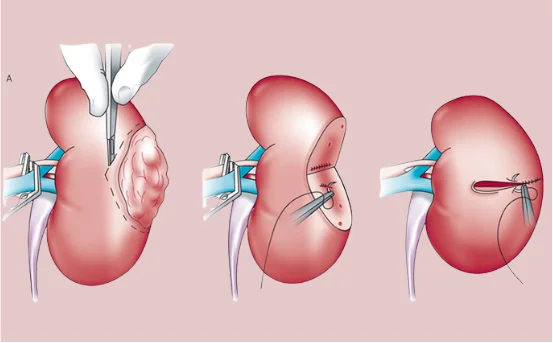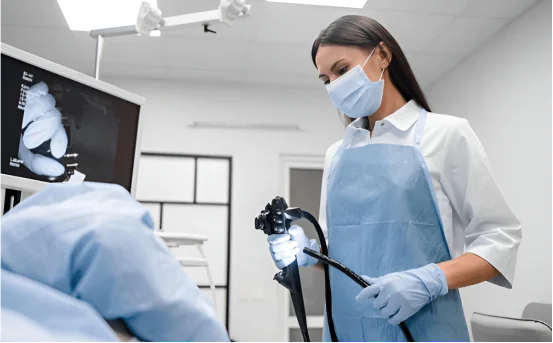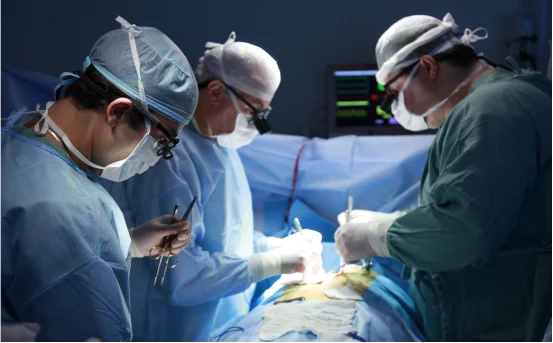Nephrectomy, or kidney removal surgery, is a medical procedure performed when a kidney is damaged, diseased, or no longer functioning properly. This procedure is often a crucial step in treating conditions such as kidney cancer, chronic kidney infection, severe trauma, or for donating a kidney for transplantation. Depending on the patient’s medical condition and the surgeon’s recommendation, different types of nephrectomy may be considered.
Nephrectomy is not a one-size-fits-all procedure. There are different types of nephrectomy, each suited to a specific medical need and patient condition. Some patients may only need a portion of their kidney removed, while others may require complete removal of one or both kidneys. Additionally, advances in surgical technology have introduced minimally invasive techniques such as laparoscopic and robotic-assisted nephrectomy, which offer faster recovery and fewer complications compared to traditional open surgery.
What Is Nephrectomy?
Nephrectomy refers to the surgical removal of all or part of a kidney. The human body has two kidneys, and under many circumstances, a person can live a healthy life with just one functioning kidney. Nephrectomy is performed for several reasons, including cancer, non cancerous kidney conditions, or as part of a living kidney donation process.
Depending on the extent of the removal and the method used, nephrectomy can be classified into different types. The choice of procedure largely depends on the patient’s medical history, the condition of the kidney, and the underlying cause for removal.
Major Types of Nephrectomy
-
Simple Nephrectomy :- A simple nephrectomy involves the surgical removal of the entire kidney but not the surrounding tissues or lymph nodes. This procedure is usually performed for non-cancerous kidney conditions such as severe infection, kidney damage due to stones or reflux nephropathy, or a non-functional kidney that causes symptoms.
This type of surgery can be performed using an open approach or a minimally invasive laparoscopic technique. The choice depends on the complexity of the case and the surgeon’s expertise. Recovery is generally smoother with laparoscopic techniques, but both approaches are effective.
- Radical Nephrectomy :- Radical nephrectomy is a more extensive procedure compared to a simple nephrectomy. In this surgery, not only the kidney but also the surrounding fat, adrenal gland (in some cases), and nearby lymph nodes are removed. This is typically performed when a patient is diagnosed with kidney cancer, especially when the tumor is large or has spread beyond the kidney. The goal of a radical nephrectomy is to ensure complete removal of the cancerous tissue and reduce the chances of recurrence. It may be performed using open surgery, laparoscopic, or robot-assisted techniques. Modern robotic-assisted surgery allows for enhanced precision and quicker recovery, though it may not be available in all centers.
-
Partial Nephrectomy :- In a partial nephrectomy, only the diseased or cancerous portion of the kidney is removed, preserving as much healthy tissue as possible. This kidney-sparing surgery is often recommended for patients with small tumors (usually less than 4 cm) or when preserving kidney function is critical, such as in patients with a single kidney or pre-existing kidney disease.
Partial nephrectomy can be performed using open, laparoscopic, or robotic approaches. It is a technically demanding procedure but offers the benefit of maintaining better long-term kidney function and reducing the risk of chronic kidney disease after surgery.
Surgical Approaches for Nephrectomy
Regardless of the type of nephrectomy, there are three main surgical approaches used to perform the procedure
- Open Surgery :- In open nephrectomy, the surgeon makes a large incision in the abdomen or side (flank) to access the kidney. This method is often used in complex cases or when larger tumors are involved. Though it offers direct access and visibility, open surgery usually requires a longer recovery time and hospital stay compared to minimally invasive options.
- Laparoscopic Surgery :- Laparoscopic nephrectomy involves several small incisions through which surgical instruments and a camera are inserted. This minimally invasive method results in less pain, reduced blood loss, shorter hospital stays, and quicker recovery. It is suitable for both simple and radical nephrectomies, depending on the patient’s condition.
- Robotic Assisted Surgery :- An advanced form of laparoscopic surgery, robotic-assisted nephrectomy offers improved precision and control. The surgeon operates robotic instruments through a console, allowing for more accurate dissection and suturing. Robotic-assisted techniques are especially beneficial in partial nephrectomies where preserving healthy kidney tissue is vital.
When Is Nephrectomy Needed?
Nephrectomy may be recommended in the following situations
-
Kidney cancer (renal cell carcinoma)
-
Non-functioning kidney due to birth defects or damage
-
Severe kidney infections (pyelonephritis)
-
Polycystic kidney disease causing symptoms
-
Kidney donation for transplantation
-
Urinary obstruction leading to irreversible kidney damage
-
Trauma or injury to the kidney
Before proceeding with nephrectomy, a complete evaluation including imaging tests like CT scan, MRI, or ultrasound is performed. Blood and urine tests are also conducted to assess kidney function and overall health.
Risks and Complications
Like any major surgery, nephrectomy carries certain risks. These may include
-
Bleeding
-
Infection
-
Injury to nearby organs
-
Blood clots
-
Hernia at the incision site
-
Decreased kidney function (especially if only one kidney remains)
Most patients recover well from nephrectomy, but follow up care is crucial. Those with one remaining kidney need regular monitoring to ensure the remaining organ continues to function effectively.
Recovery After Nephrectomy
Recovery time varies depending on the type of surgery performed and the patient’s overall health. Patients undergoing laparoscopic or robotic surgery may return to normal activities within 2 to 4 weeks, while open surgery may require 6 to 8 weeks for full recovery.
Postoperative instructions usually include
-
Avoiding heavy lifting for several weeks
-
Managing pain with prescribed medications
-
Monitoring wound healing
-
Gradual return to physical activity
-
Drinking plenty of fluids and eating a kidney friendly diet
Regular follow-ups with the urologist or nephrologist are essential to track recovery progress and kidney function.
Life After Nephrectomy
Many people live healthy and active lives with one kidney. However, it becomes essential to maintain a healthy lifestyle to prevent kidney damage. This includes
-
Staying hydrated
-
Avoiding overuse of NSAIDs and nephrotoxic medications
-
Managing blood pressure and blood sugar
-
Following a balanced diet low in sodium and processed foods
-
Regular medical checkups and kidney function tests
If nephrectomy was done due to cancer, additional treatments such as chemotherapy, immunotherapy, or targeted therapy may be necessary based on the staging and pathology report.
Conclusion
Nephrectomy is a vital surgical option for various kidney-related conditions, including cancer, trauma, and donation. Understanding the different types simple, partial, and radical along with their surgical approaches, helps patients make informed decisions about their care.























